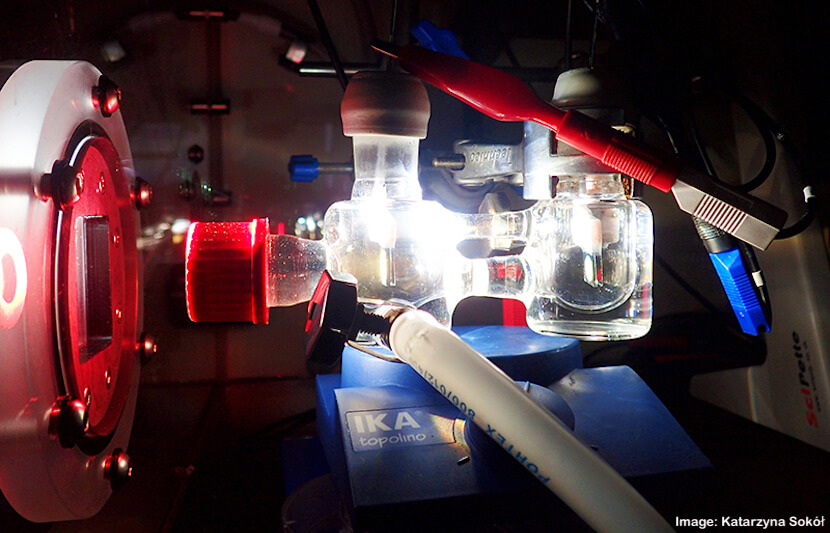Scientists at St. John’s College, University of Cambridge, have developed a new process of converting sunlight into fuel.
The team’s “semi-artificial photosynthesis” method utilizes sunlight to split water into hydrogen and oxygen in a lab setting. Their process uses both biological components — an enzyme from algae — as well as man-made technologies, differentiating it from fully artificial photosynthesis, which uses only man-made elements.
The research paper is published in the journal Nature Energy.
During photosynthesis, the natural process through which plants extract energy from sunlight and water, water absorbed by plants is split into oxygen and hydrogen in a process called hydrolysis. The hydrogen derived from this process could potentially be used as a sustainable — and unlimited — source of energy.
Unfortunately, natural photosynthesis is not generally efficient, producing only the small amount of energy necessary for an organism to survive.
“Natural photosynthesis is not efficient because it has evolved merely to survive so it makes the bare minimum amount of energy needed – around 1-2 percent of what it could potentially convert and store,” first author Katarzyna Sokół, a doctoral student at St. John’s College, said in a statement.
Artificial photosynthesis has existed for decades, but it has been hampered by its reliance on the use of catalysts, which are typically expensive and sometimes toxic.
The first artificial photosynthetic method was developed in the late 1960s by Akira Fujishima, who discovered that titanium dioxide could be used to spur hydrolysis. So, the idea has been explored for decades, but an industrial-scale method has not been developed yet.
The process developed by Sokół and her team is part of a growing movement exploring semi-artificial photosynthesis, which utilizes biological elements to try to overcome some of the deficiencies of methods that rely on chemical catalysts.
By extracting hydrogenase from algae, an organism — and by extension an enzyme — that can be found in abundance in nature, the researchers developed a process that could theoretically be much cheaper than many existing methods.
In order to do so, they had to “reactivate” the production of hydrogen in the algae.
“Hydrogenase is an enzyme present in algae that is capable of reducing protons into hydrogen,” Sokół said in a statement. “During evolution this process has been deactivated because it wasn’t necessary for survival but we successfully managed to bypass the inactivity to achieve the reaction we wanted — splitting water into hydrogen and oxygen.”
To accomplish this, she explained, they had to “reactivate” hydrogen production in vitro, when the hydrogenase was integrated with other components in the semi-artificial device.
Ultimately, the semi-artificial device they developed could outperform natural systems.
“We could say that our system ‘re-wired’ photosystem II directly to hydrogenase and thus, ‘re-engineered’ the photosynthetic pathway that is inaccessible in biology, to achieve the desired reaction of water splitting into hydrogen and oxygen with high selectivity and efficiency,” said Sokół.
However, Sokół explained, their project is still on the experimental scale and there is a long way to go before it could be applied on an industrial level.
“Development of this model system overcomes many difficult challenges associated with the assembly of the synthetic-biological interface through a multi-disciplinary approach, and as a result provides the toolbox for developing future semi-artificial systems for solar energy conversion and storage,” she said.
“Our system is a proof-of-concept device, as it is still too fragile to be applied as a large-scale technology.”
Still, the new technology is a big step toward large-scale semi-artificial photosynthesis.
Sokół emphasized that semi-artificial platforms could have a number of applications beyond harvesting solar-powered energy.
“The semi-artificial platform could allow us to replace components and extend the application from solar water splitting to solar carbon dioxide fixation and replace fragile enzymes by more robust whole photosynthetic cells in future development,” she said.
“The reduction of the greenhouse gas carbon dioxide using chemical methods is even more challenging than water splitting to produce hydrogen.”



